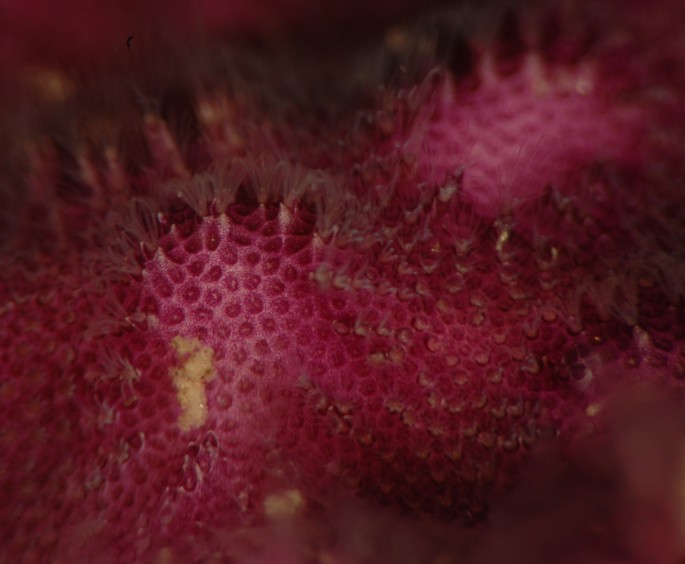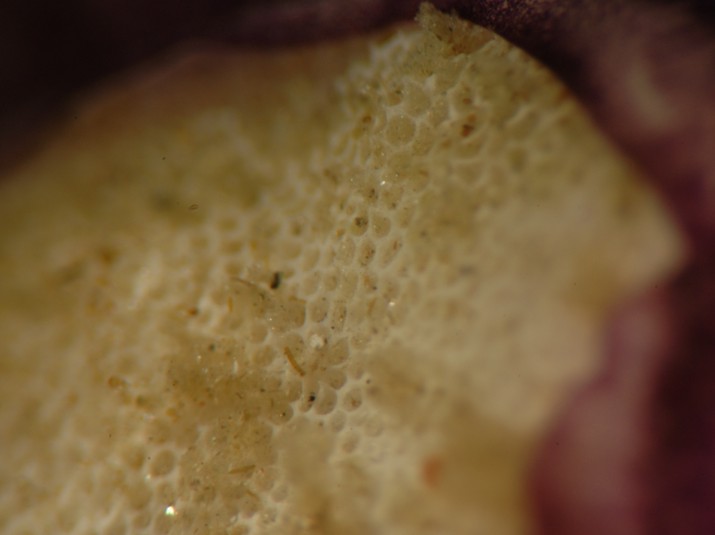How to Distinguish from Similar Species: The colony at first glance may look like a purple sponge, but it is hard and the circular clusters of zooecia can be seen without magnification (see above). Several other species such as Disporella fimbriata form small colonies not divided into subclusters and not colored purple.
Geographical Range: From British Columbia to southern California
Depth Range:
Habitat:
Biology/Natural
History:
| Return to: | |||
| Main Page | Alphabetic Index | Systematic Index | Glossary |
References:
Dichotomous Keys:Kozloff 1987, 1996
General References:
Scientific
Articles:
Type articles in this span
Web sites:
General Notes and Observations: Locations, abundances, unusual behaviors:

In this closeup view the individual zooids
can be seen. The surface of the colony is covered with
circular clusters
of groups of elevated zooids
with non-elevated zooids
between and within the circles.

Another view also shows the circular
groups of clusters of elevated
zooecia.

A dead patch on
the colony clearly shows the encrusted tubes the colony
is made of
Authors and Editors of Page:
Dave Cowles (2007): Created original page
CSS coding for page developed by Jonathan Cowles (2007)
